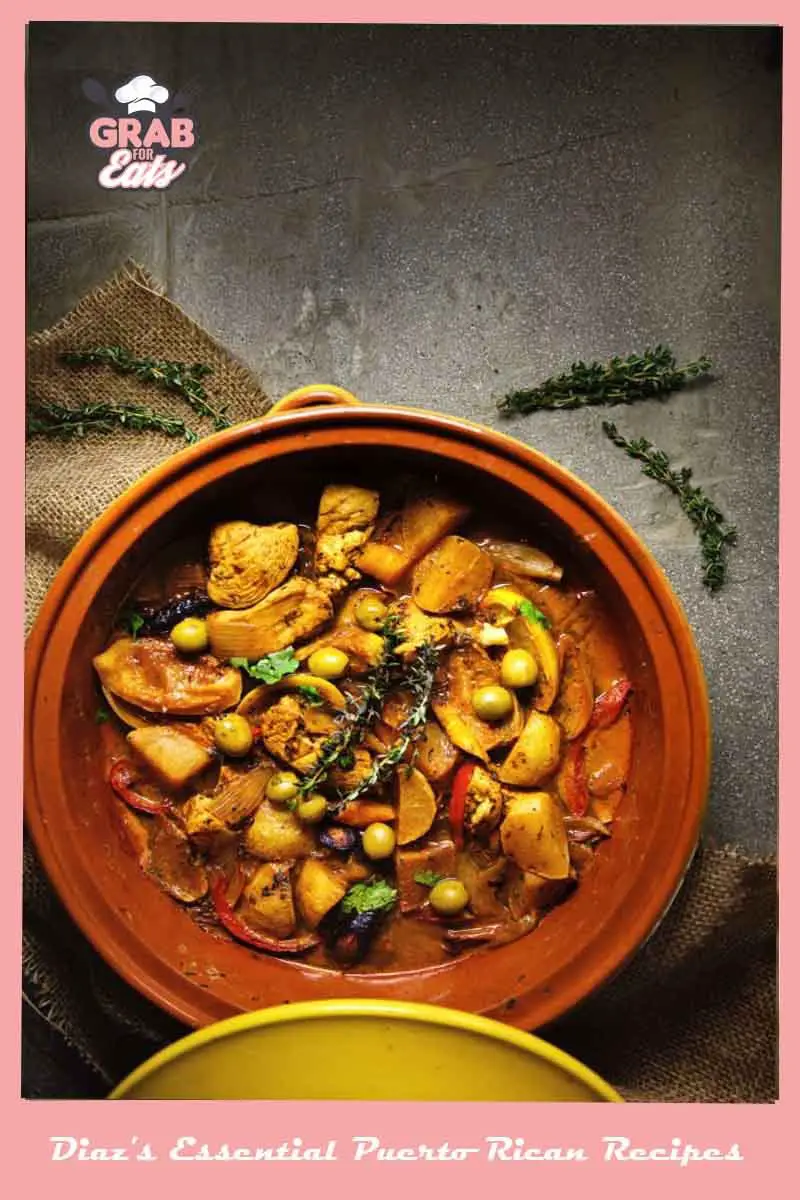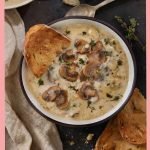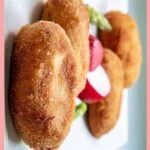Von Diaz, a journalist and cookbook author, talks about her new column in the New York Times called “Diaz’s Essential Puerto Rican Recipes.” Diaz was born in Ro Piedras, Puerto Rico, and spent his childhood going back and forth between Atlanta and the island. In this piece, she talks about dishes and tastes that remind her of her time in Puerto Rico.
You may begin with Pollo en Fricasé, chicken thighs cooked in a rich, onion, tomato-based sauce with garlic, white wine, and vinegar enriched by olives and capers.
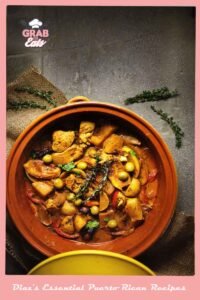
Know About Your Ingredients:
- Chicken: 3 pounds of bone-in and skinned chicken. Chicken is full of good proteins and doesn’t have a lot of fat.
- Adobo seasoning: 3 tsp of adobo spice seasoning. Adobo seasoning is a mix of spices used often in Latin and Caribbean cooking.
- Olive oil: 2 tbsp of olive oil. The oil obtained from the olive’s fleshy section, Olea europaea, is called olive oil.
- Garlic: 3 tbsp minced garlic. Garlic is primarily used as a seasoning enhancer, although it can also be consumed as a vegetable. There are several uses for this ingredient.
- Tomato: 14 oz diced tomato. It is frequently served as a garnish for salads and appetisers, thinly sliced for sandwiches, or mixed into various pasta, meat, and vegetable recipes.
- Tomato paste: 2 tbsp of tomato paste. Tomato paste is used to enhance the flavor of foods.
- Bay leaves: 2 bay leaves. Bay leaves give meals a rich flavor.
- Onion: 1 onion diced. Onions are a powerful flavoring agent.
- Red bell pepper: ½ red bell pepper diced. Red bell peppers are rich in nutrients, including many essential vitamins, and low in calories.
- Cilantro: ¼ cup cilantro minced. Cilantro has a fresh, lemony, or soapy flavor.
- Red wine: 1 cup red wine. Compounds in red wine make food taste better when it’s cooked.
- Olive: 12 olives filled with red peppers and cut in half. Olives give meals a salty, fresh flavor.
- Potatoes: 6 small golden potatoes slashed. Potatoes have a mild buttery flavor.
- Carrots: 3 big carrots, peeled and cut up. Carrots are a flavorful and adaptable item that can be used in various dishes to add colour and flavour.
- Salt: Salt to taste. Salt gives food a strong taste. It improves scents and balances the flavor.
How to make Pollo en Fricasé?
- Mix the chicken, adobo sauce, garlic, and 2 tablespoons of olive oil. Combine the ingredients, then cover and place them in the refrigerator for half an hour.
- Brown the chicken evenly on all sides by heating one tablespoon of olive oil in a large, heavy pot over medium heat. Take it out of the oil and put it to the side.
- Add one tablespoon of olive oil, one red bell pepper, and one bunch of cilantro to the same saucepan, and sauté the mixture for four minutes, or until the onion is translucent.
- Using red wine, scrape the brown particles from the bottom of the pot. Add the diced tomatoes and tomato paste to the mixture and stir.
- Add the remaining ingredients, including the chicken, to the pot. Cover and bring to a boil before lowering the heat and simmering.
- You’re looking at a cooking time of 45 minutes or less. The sauce should thicken after 15 minutes of simmering.
- Serve with white rice.
Puerto Rican Food:
Puerto Rican food is a mix of American ingredients from the 1950s (like mayonnaise and canned vegetables) with deep-frying techniques from Africa, root vegetables from the Taino people, and the Spanish love of olive oil, garlic, and pork. In the past, the Tano Indians, the Spanish rulers, and the enslaved Africans influenced what is now called Cocina Criolla, or Creole cooking, on the island. Most local dishes have different kinds of meat, garlic, olive oil, and rice.
They also often have plantains, a portion of starchy local food that tastes like a cross between a banana and a potato. Most notably, though, are the spicy flavours that reflect the lively culture of Puerto Rico. This is why the island’s most unique and representative foods are worth trying.
What is a Typical Puerto Rican Dish?
Many visitors’ favorite part of their trips is when they eat real Puerto Rican food. The vibrant culture of Puerto Rico comes to life in its food, which is a celebration of flavors that tourists can enjoy. Mofongo, tostones, pasteles, arroz con gandules, tembleque, and coquito are some of the most popular things to eat.
- Mofongo: Green plantain chunks, garlic, and salt-cured pork are usually used to make mofongo. It can also be cooked with butter or oil. Plantains can be softened when mashing by adding salty broth.
- Tostones: These are two classic plantain preparation methods. You may get your tostone fixed by using green plantain, a delicious ingredient. Deep-fried plantain is cooked in water and garlic before being chopped into thick wheels and deep-fried again for crispness.
- Pasteles: The masa is flattened onto a plantain leaf, the filling is put in the centre, and the plantain leaf is rolled, fastened with string, and wrapped in parchment paper to make the pastel. After that, the pasteles are boiled, unwrapped, and served.
- Arroz Con Gandules: Rice, pigeon, peas and pork are cooked together in a single pot with sofrito to create Arroz con gandules. This is Puerto Rico’s national cuisine, along with roasted pork. This meal is usually reserved for the holiday season or special events.
- Coquito: Tasty treat Tembleque is produced by melting a mixture of coconut cream and milk with salt, cornstarch, and sugar, often with a splash of orange blossom water sprinkled with cinnamon.
Best Puerto Rican Desserts:
In Puerto Rican desserts, tropical Caribbean fruits such as pineapple, guava, and coconut are combined with standard components such as vanilla, caramel, sugar, milk, and bread to create a delectable dessert. Puerto Rican desserts are simple and straight; they are not in the slightest degree showy.
- Guava Pastelitos: Go to the store and find puff pastry in the freezer section. Guava paste is usually in the Hispanic area. Put squares of dough between slices of paste and bake them for twenty minutes. They also make a good breakfast.
- Tembleque: Puerto Rico’s Tembleque is a coconut-based dessert pudding. It is one of the most widely consumed desserts in Puerto Rican cuisine. Heat the ingredients on the stove, pour them into moulds, and refrigerate for a few hours. Once it’s cold and firm, sprinkle on cinnamon for a jiggly Puerto Rican favorite.
- Pineapple Rum Cake: Pineapple rum cake combines the best tropical fruits, ice cream, and alcohol. Traditionally, the sugary dough was mixed with dried fruit soaked in rum for a few months. Rum cake, or “bizcocho de Ron” in Puerto Rico, is a delicious bread-based dessert that tastes like pineapple and is drenched in ice cream.
Arroz con Dulce/Arroz con Leche: Rice pudding is the Puerto Rican dish most associated with the island’s culture. Puerto Rican rice pudding is made with sugar, milk, vanilla, and spices like ground cinnamon and nutmeg. You can make Arroz con dulce by adding coconut milk and coconut shavings to the rice.
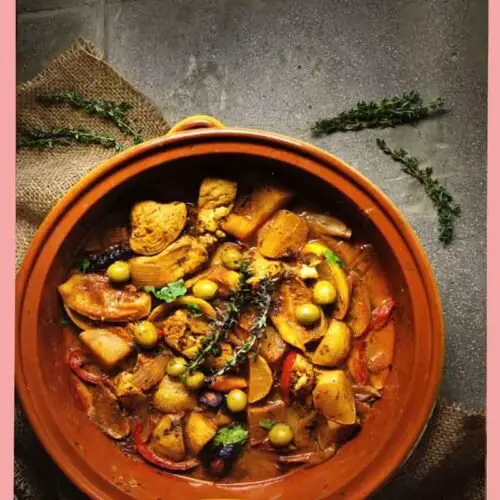
Diaz’s Essential Puerto Rican Recipes
Ingredients
- 3 pounds bone-in and skinned chicken
- 3 tbsp adobo spice seasoning
- 2 tbsp olive oil
- 3 tbsp minced garlic
- 14 oz diced tomato
- 2 tbsp tomato paste
- 2 bay leaves
- 1 onion diced
- 1/2 red bell pepper diced
- 1/4 cup cilantro minced
- 1 cup red wine
- 12 olives filled with red peppers and cut in half
- 6 small golden potatoes slashed
- 3 big carrots, peeled and cut up
- Salt to taste
Instructions
- Add adobo, olive oil, and garlic to the chicken. Mix well, cover, and refrigerate for 30 minutes
- Brown the chicken evenly on all sides by heating one tablespoon of olive oil in a large, heavy pot over medium heat
- Take it out of the oil and put it to the side
- Deglaze the pot with red wine, scraping out any brown pieces. Add tomato dice and paste
- Combine the chicken and remaining ingredients. Boil, then simmer and cover
- Prepare chicken in 45 minutes. Uncover and simmer for 15 minutes to thicken the sauce. Serve with rice
Nutrition
Final words:
Von Diaz, a journalist, historian, and cookbook author, put together some of her most important Puerto Rican recipes for us. Diaz was born in Ro Piedras, Puerto Rico, and spent his childhood going back and forth between Atlanta and the island.
In this piece, she talks about dishes and tastes that remind her of her time in Puerto Rico. She calls these dishes “foundational” to her understanding of flavour because they are “a culinary mejunje,” or mix, of ingredients and techniques from Native Americans, Africans, Spaniards, and Americans.

